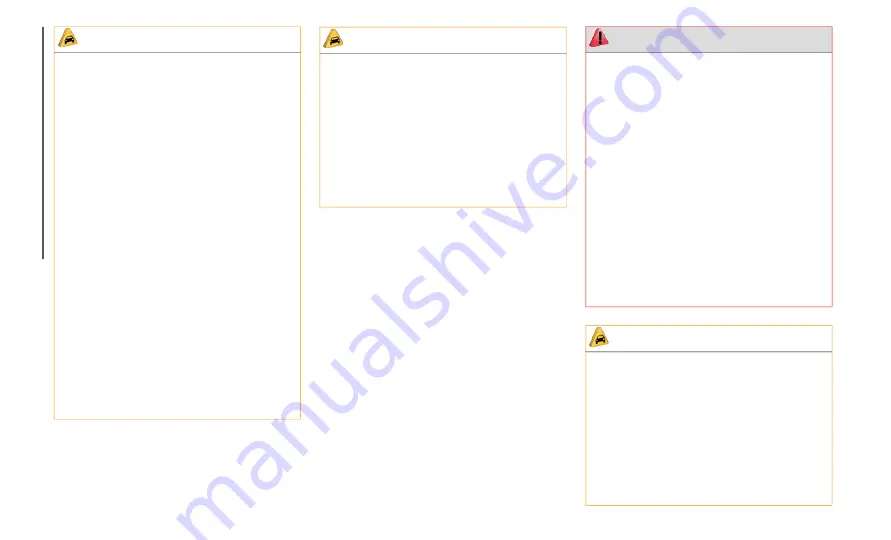
STARTING AND OPERATING
194
(Continued)
(Continued)
Driving In Flooded Area
NOTE:
Do not drive the vehicle on flooded roads as
it could cause short circuit of electrical/elec
-
tronic parts, or water enters the engine and
causes it to lock up (hydro-lock) and stall. If
the vehicle has been immersed in water
contact your authorized dealer.
Although your vehicle is capable of driving
through shallow standing water, consider the
following Cautions and Warnings before
doing so.
CAUTION!
To avoid damage to your vehicle or tires,
observe the following precautions:
Because of restricted traction device
clearance between tires and other
suspension components, it is important
that only traction devices in good condi
-
tion are used. Broken devices can cause
serious damage. Stop the vehicle imme
-
diately if noise occurs that could indi
-
cate device breakage. Remove the
damaged parts of the device before
further use.
Install device as tightly as possible and
then retighten after driving about ½ mile
(0.8
km).
Do not exceed 30
mph (48
km/h).
Drive cautiously and avoid severe turns
and large bumps, especially with a
loaded vehicle.
Do not drive for a prolonged period on
dry pavement.
Observe the traction device manufac
-
turer’s instructions on the method of
installation, operating speed, and condi
-
tions for use. Always use the suggested
operating speed of the device manufac
-
turer’s if it is less than 30
mph (48
km/
h).
Do not use traction devices on a compact
spare tire.
CAUTION! (Continued)
WARNING!
Driving through standing water limits
your vehicle’s traction capabilities. Do
not exceed 5
mph (8
km/h) when driving
through standing water.
Driving through standing water limits
your vehicle’s braking capabilities,
which increases stopping distances.
Therefore, after driving through standing
water, drive slowly and lightly press on
the brake pedal several times to dry the
brakes.
Failure to follow these warnings may
result in injuries that are serious or fatal
to you, your passengers, and others
around you.
CAUTION!
Always check the depth of the standing
water before driving through it. Never
drive through standing water that is
deeper than the bottom of the tire rims
mounted on the vehicle.
Determine the condition of the road or
the path that is under water and if there
are any obstacles in the way before
driving through the standing water.
















































